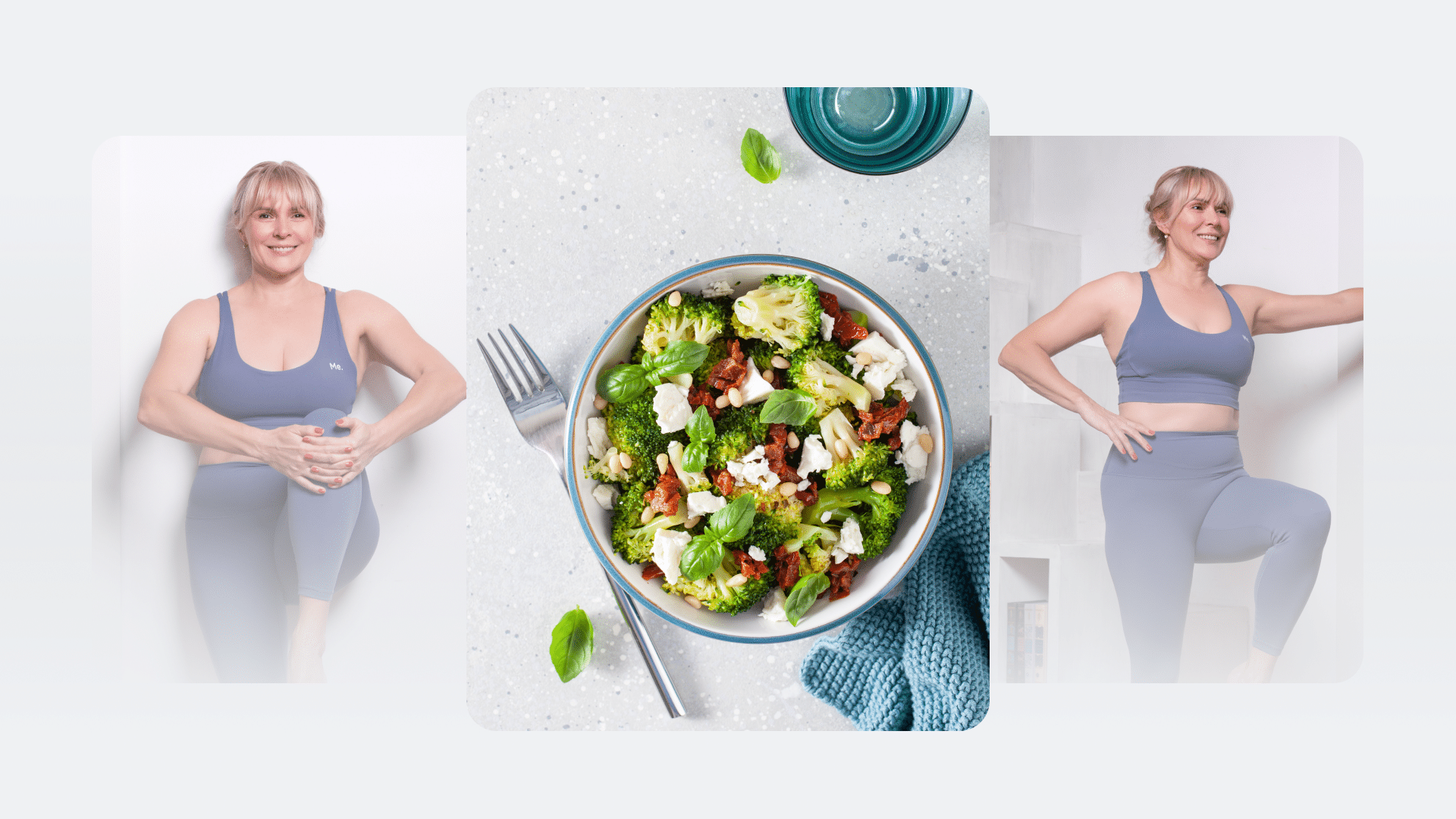Intermittent fasting for women over 50 is gaining popularity as a way to improve health and wellness, particularly among women over 50. This ancient practice of abstaining from food for certain periods of time has been used by many cultures throughout history for various purposes. With so many different approaches available today – such as the 16/8 method, the 5:2 diet, or alternate-day fasting – it can be difficult to determine which one is best for you.
Each protocol has unique benefits and limitations, and there is no one-size-fits-all approach. When it comes to intermittent fasting for women over 50, there are multiple considerations to consider. Hormones, in particular, can play a significant role in how the body responds to fasting and can affect the effectiveness of each protocol.
Intermittent Fasting For Women Over 50
Women over 50 may have special dietary needs that need to be addressed when choosing a fasting program. In this article, we will explore the differences between intermittent fasting for men and women, including those over 50. We will also discuss the potential health benefits, key considerations when choosing a fasting protocol, and detailed information on each of the popular methods. By understanding all of these factors, you can make an informed decision about which intermittent fasting program is right for you.
Do Women’s Bodies Respond To Fasting Differently?
There are a variety of factors that may affect how women’s bodies respond to fasting in comparison to men. Although both men and women can benefit from intermittent fasting, there are some important differences to keep in mind.
One of the most important considerations is hormones. Women’s bodies produce a variety of hormones throughout their lifespan, including estrogen and progesterone, which can affect hunger levels and metabolism.
These hormones fluctuate throughout different life stages, such as during menopause. As a result, women may need to adjust their fasting routine accordingly in order to achieve optimal results.
In addition, female bodies are more sensitive to calorie restriction. Research shows that the hypothalamus, a region of the brain that regulates metabolism and hunger, is negatively impacted in female animals subjected to calorie restriction.
This means that the secretion of GnRH (gonadotropin-releasing hormone) is reduced and reproductive hormones stop being produced. Over time, this can lead to infertility, weak bones, and other health issues.
Finally, some studies suggest that during fasting women may see greater weight loss results than men do. This could be due to the fact that female bodies are generally better at using fat stores for energy than male bodies.
Read More: What Can You Drink During Intermittent Fasting?
What Is The Best Intermittent Fasting Plan For Women over 50?
Women are encouraged to evaluate their individual needs and circumstances when choosing an intermittent fasting plan. Each protocol has its own set of benefits and limitations, so it’s important to understand the different approaches and decide which one will work best for you.
That said, a moderate approach is more likely to be successful in the long run. Below are some of the most popular intermittent fasting plans for women over 50.
Intermittent Fasting for Women over 50
- The 16/8 Method: The 16/8 method involves limiting your eating window to eight hours each day and fasting for the remaining 16. This can be done by eating all of your meals within a specific timeframe, such as 10am-6pm or 12pm-8pm each day (4).
- The 5:2 Diet: The 5:2 diet, also known as the Fast Diet, involves eating a regular, healthy diet for five days of the week and then fasting for two non-consecutive days (1). On fasting days, you would eat about one-quarter of your total daily calories for that day—about 500 calories for women.
- Crescendo Fasting: Crescendo fasting is a more flexible approach that involves gradually increasing your fasting window over a period of time. For example, you may start with fasting for 12 hours and then gradually increase it to 14 hours, 16 hours, 18 hours, and so on (7).
- Eat-Stop-Eat: Eat-stop-eat requires fasting for 24 hours one to two times per week. This can be done by skipping dinner one day and not eating the following day until dinner.
- Alternate-Day Fasting: Alternate-day fasting involves one day of eating, followed by a day of fasting. This can be done by eating anywhere from 0-25% of your daily calorie needs on fasting days.
How Can I Safely And Effectively Implement Intermittent Fasting?
No matter which intermittent fasting program you decide to follow, follow these tips to ensure you’re doing it safely and effectively:
- Start slowly. Don’t rush into a fasting protocol. Give your body time to adjust by starting with a shorter fasting window and gradually increasing it.
- Don’t overeat. Even when you’re not fasting, your calorie intake should be in line with your health goals. Eating nutrient-dense foods in moderation during your feeding window can make your fasting period much easier.
- Listen to your body. If you’re feeling lightheaded, dizzy, or excessively tired during fasting days, take a break and eat something.
- Stay hydrated. Drink plenty of water to prevent dehydration while fasting. If the taste of plain water isn’t appealing, a pinch of salt or squeeze of lemon juice can help make it more palatable.
- Add movement. Exercise is a great way to boost your metabolism and get the most out of your intermittent fasting experience. The timing and intensity of your workouts should be tailored to meet your reduced calorie needs during fasting days.
Looking for a way to break the vicious cycle of weight loss and tone up all the jiggly parts? Watch the extra pounds fly off and your muscles firm up with the BetterMe app!
The Benefits Of Intermittent Fasting For Women Over 50
Intermittent fasting offers many potential health benefits for women over 50, including:
Weight Management
After a certain age, it’s more difficult for women to maintain a healthy weight. There are several reasons why this happens; one of is the natural decline in metabolism that comes with age.
Another is the decrease in physical activity due to age-related conditions. Intermittent fasting can help with weight management by creating a calorie deficit, where you eat less calories overall than you burn (5).
Improved Insulin Sensitivity
Intermittent fasting may help improve insulin sensitivity, which is especially important for women over 50 who are more likely to be at risk of type 2 diabetes (2). Some studies have found that people who practice intermittent fasting have improved markers of blood glucose control and insulin sensitivity.
Increased Longevity
Intermittent fasting has been linked to an increased lifespan in animal studies (8). Studies have also found that intermittent fasting can reduce inflammation and oxidative stress, which are both linked to aging and chronic disease.
Improved Mental Clarity
Intermittent fasting might help improve mental clarity and focus. Studies have found that intermittent fasting can reduce inflammation in the brain, which could have benefits for people with neurodegenerative diseases (10).
Read More: 7 Tips For Making The Perfect Cup Of Intermittent Fasting Coffee
Improved Heart Health
Intermittent fasting might help improve heart health by lowering blood pressure and improving cholesterol levels (6). This is particularly important for women over 50, who are at an increased risk of developing heart disease.
Risks Associated With Intermittent Fasting For Women Over 50
Intermittent fasting can be a safe and effective way to lose weight, but there are some potential risks to consider:
Interference With Circadian Rhythms
Intermittent fasting can interfere with the body’s natural circadian rhythms, which could lead to insomnia and fatigue (3). To avoid this, make sure your fasting window is in line with your natural sleep cycle and limit caffeine intake during the fasting period.
If you tend to let yourself off the hook, raise the white flag when things get tougher than you expected, send yourself on an unconscious binge-eating trip – BetterMe app is here to help you leave all of these sabotaging habits in the past!
Dehydration
Dehydration is a common side effect of intermittent fasting. What happens is that when you fast, your body goes into a state of ketosis and begins to break down fat for energy. This process can cause increased urination which can lead to dehydration.
Coupled with the reduced food intake, it can be easy to become dehydrated. To prevent this, make sure you are drinking plenty of fluids throughout the day and during your fasting window.
Low Blood Sugar
Another potential risk of intermittent fasting is low blood sugar. This can happen if you are not eating enough during your feeding window, which can cause your blood sugar to drop. To avoid this, make sure you are consuming adequate amounts of nutrients during your feeding window. If you are on medication to lower your blood sugar, talk to your doctor before starting a fasting regimen.
Intermittent Fasting for Women over 50: The Bottom Line
For women over 50, intermittent fasting can be a safe and effective way to maintain health, longevity, and a healthy weight. As with any diet or lifestyle change, it’s important to consult your healthcare provider before beginning a fasting regimen. In addition, make sure you’re properly hydrated, nourished, and mindful of your body’s response to the new eating pattern.
DISCLAIMER:
This article is intended for general informational purposes only and does not serve to address individual circumstances. It is not a substitute for professional advice or help and should not be relied on for making any kind of decision-making. Any action taken as a direct or indirect result of the information in this article is entirely at your own risk and is your sole responsibility.
BetterMe, its content staff, and its medical advisors accept no responsibility for inaccuracies, errors, misstatements, inconsistencies, or omissions and specifically disclaim any liability, loss or risk, personal, professional or otherwise, which may be incurred as a consequence, directly or indirectly, of the use and/or application of any content.
You should always seek the advice of your physician or other qualified health provider with any questions you may have regarding a medical condition or your specific situation. Never disregard professional medical advice or delay seeking it because of BetterMe content. If you suspect or think you may have a medical emergency, call your doctor.
SOURCES:
- A randomised controlled trial of the 5:2 diet (2021, nih.gov)
- Cardiometabolic Benefits of Intermittent Fasting (2021, nih.gov)
- Circadian Rhythm and Sleep Disruption: Causes, Metabolic Consequences, and Countermeasures (2016, nih.gov)
- Intermittent fasting (2022, dietitiansaustralia.org.au)
- Intermittent fasting: The positive news continues (2021, health.harvard.edu)
- Intermittent Fasting: A Heart Healthy Dietary Pattern? (2020, nih.gov)
- optimizing your body with fasting (n.d., msfitnesschallenge.org)
- Fasting increases health and lifespan in male mice (2018, nih.gov)
- Role of therapeutic fasting in women’s health: An overview (2016, nih.gov)
- The Effects of Intermittent Fasting on Brain and Cognitive Function (2021, nih.gov)











